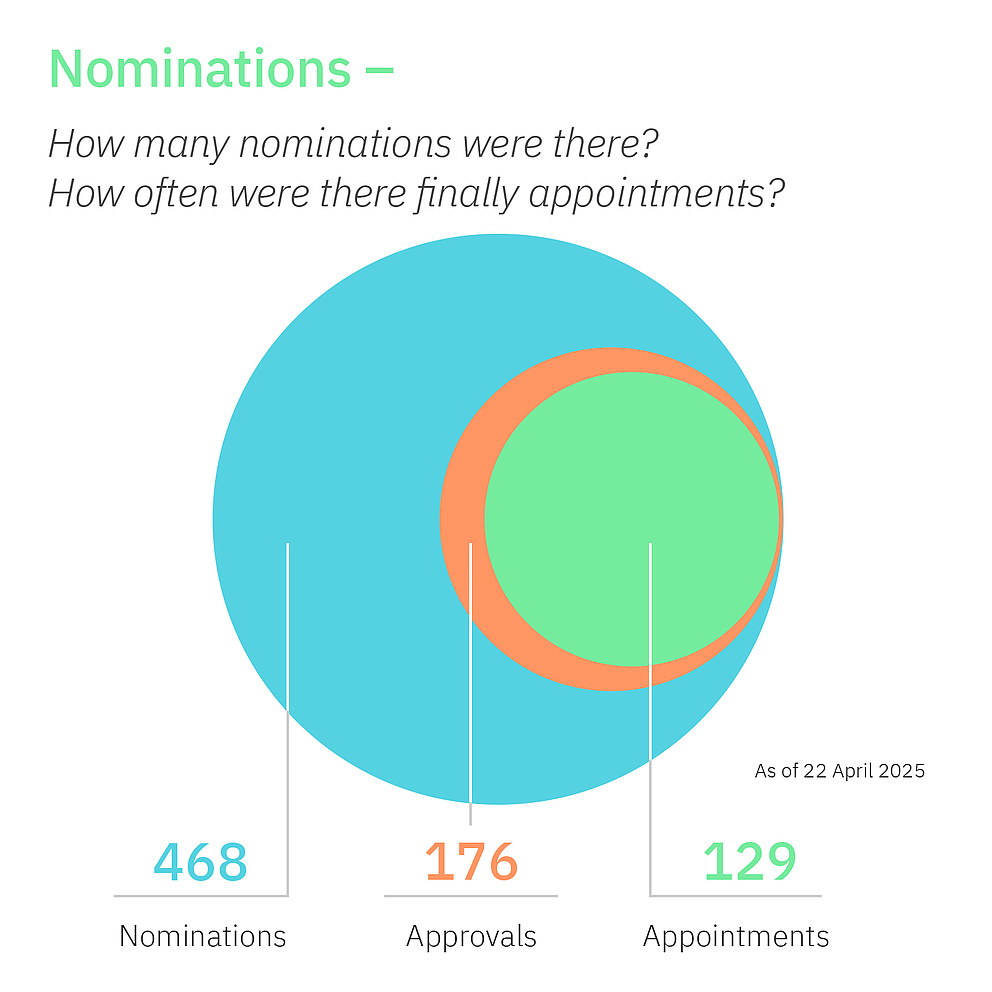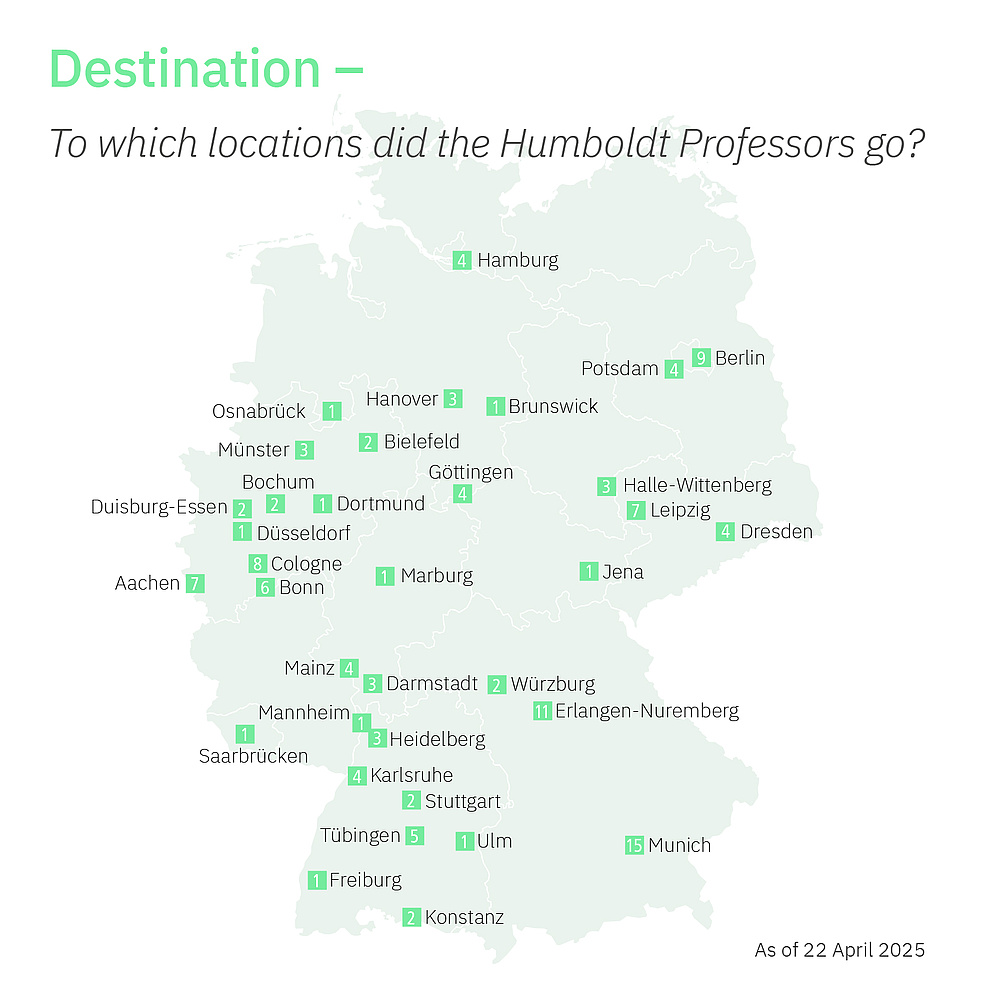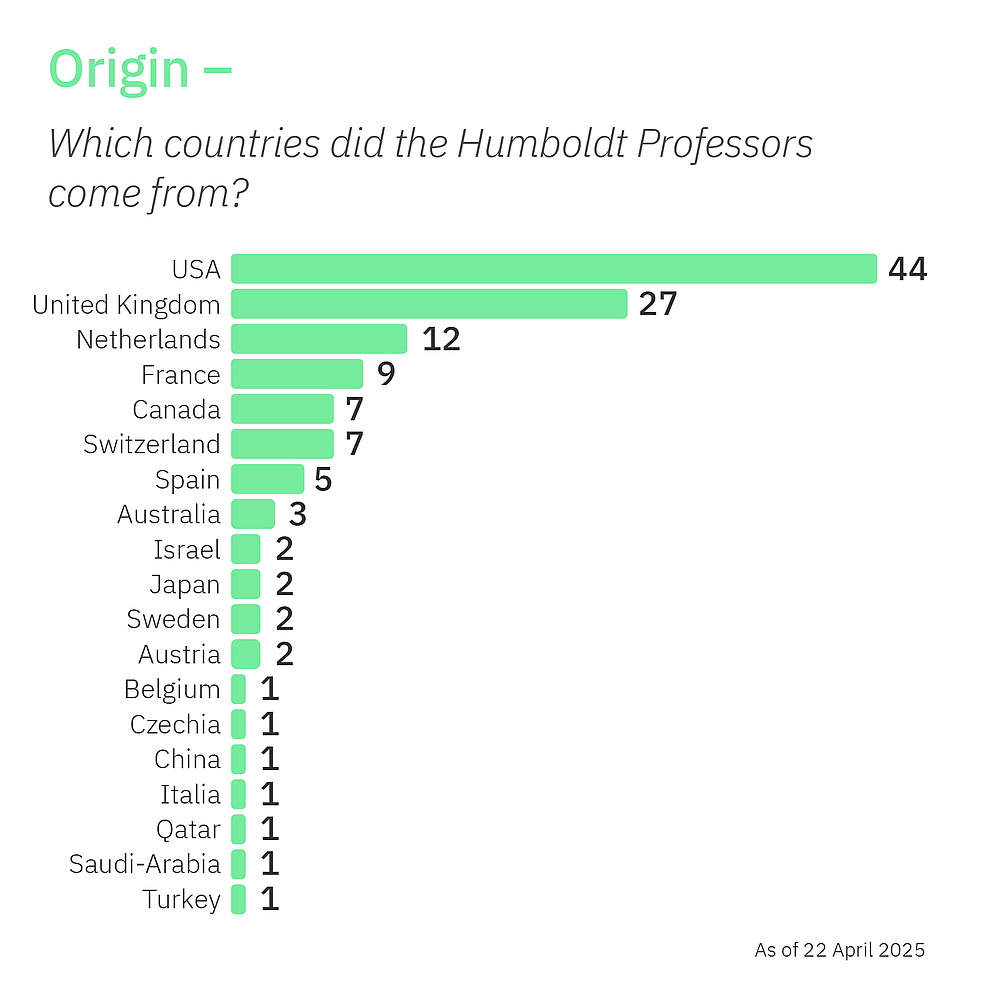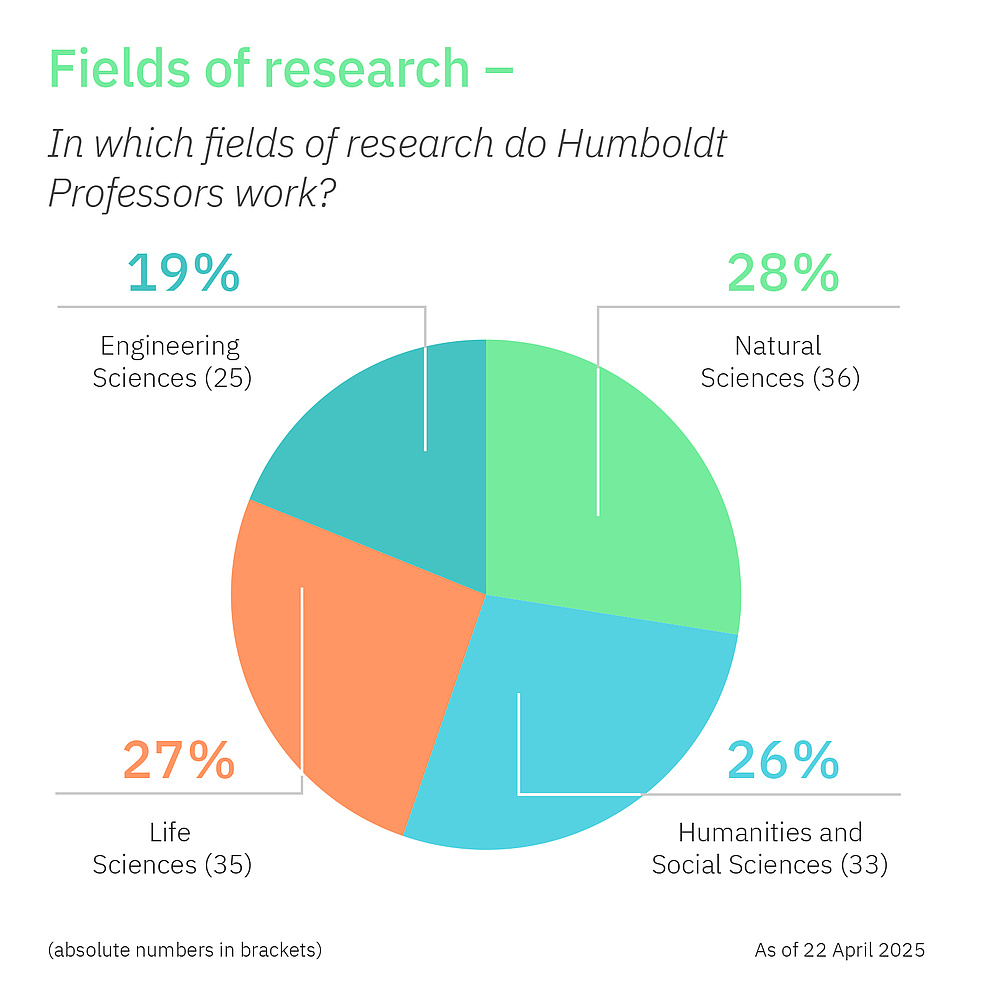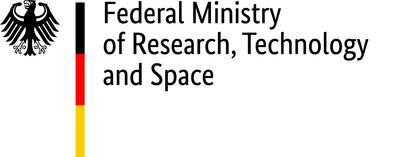Jump to the content
- {{#headlines}}
- {{title}} {{/headlines}}
Facts at a glance
How many Humboldt Professorships are being awarded?
Each year, up to ten Humboldt Professorships can be awarded to researchers from all disciplines. From 2020 to 2024, up to 30 additional Humboldt Professorships in the field of Artificial Intelligence, which can also be designed to investigate the social, legal and ethical aspects of Artificial Intelligence, could be awarded.
What is the purpose of the award funds?
The award amount is 3.5 million EUR for researchers in theoretical disciplines and 5 million EUR for those conducting experimental research. It finances the professorship for the first five years. When the universities nominate a candidate they also have to submit a strategic plan for the long-term financing of the professorship beyond the funding period. The money can be used very flexibly. Most of it is channeled into building research teams or paying for technical or laboratory facilities. But it can also be used to finance positions for accompanying partners, for example. Furthermore, a maximum of 180,000 EUR annually may be spent on the award winner’s salary, in addition to whatever the university pays from its own budget. The programme is financed by the Federal Ministry of Education and Research.Can Germans receive the award?
Nationality is irrelevant. The candidate must be established as a researcher in another country and come to Germany from that country. About half of the award winners are Germans returning from abroad.Who can nominate candidates for the Humboldt Professorship?
German universities. They may make a nomination on their own, or they can get together with a non-university research institute and submit a joint nomination. The award winner then usually spends half his or her time working at the university and the other half at the partner institution, such as a Max Planck Institute.When are decisions made, negotiations conducted and awards granted?
Twice a year, an interdisciplinary selection committee appointed by the Foundation examines the nominations. Experts from the German Research Foundation also take part, particularly to assess the strategic plans submitted by the universities. The most convincing candidates are selected for the award and can then embark on their final negotiations with the respective university. This can take up to eight months. If appointment negotiations fail, the award is not granted. The researchers who are appointed as Alexander von Humboldt Professors receive their awards at a formal, annual ceremony that is held in Berlin in May.
We welcome the synergies between Alexander von Humboldt Professorships for Artificial Intelligence and research projects being funded through the German Research Foundation’s strategic funding initiative in the field of Artificial Intelligence.

